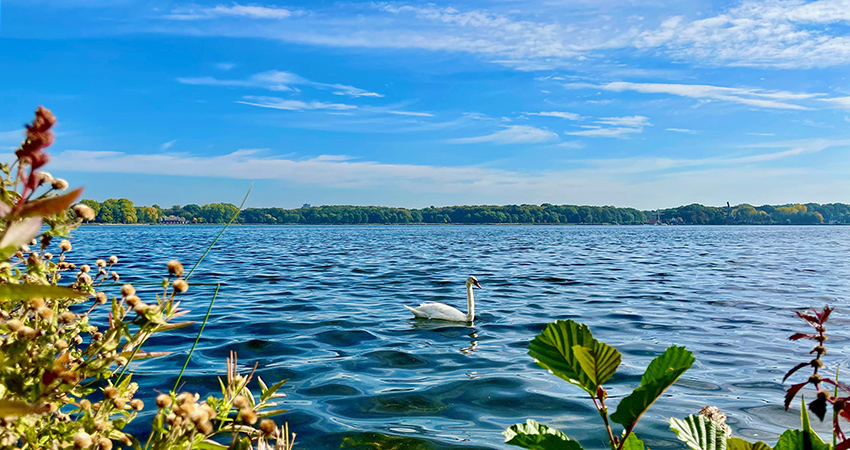New method locks phosphorus in lake water to improve water quality

-
Editorial Team
Share article:
– Sponsored Story –
The European Commission requires Member States to comply with the Water Framework Directive (WFD) by meeting set targets by 2027 at the latest. In the six year report (2018) the European Environment Agency reported only 40% of surface waters meet ‘good’ ecological status and 38% only met ‘good’ chemical status, revealing that rapid improvements are needed for compliance. In the meantime, European countries are hit hard by climate change. Extremely dry summers have resulted in poor water quality, so we need new solutions.
As a result of climate change patterns, lakes in Europe are suffering from poor water quality due to increased and more frequent rainfall events and warmer temperatures which are altering lake processes. The increased delivery of nutrients into a system as a result of climate change, changes the stratification patterns as well as whole-lake nutrient cycling. That is why water authorities all over the world are searching for technologies to help treat this problem.
Phoslock®, a product of the Australian company Phoslock Environmental Technologies (PET), provides an effective method. Phoslock is a proprietary technology originally developed by the Commonwealth Scientific Industrial Research Organisation (CSIRO) that removes excess phosphate from waterbodies. It is a formulation of bentonite (clay) and lanthanum, a naturally occurring rare-earth element, which binds with phosphate to form an insoluble and biologically inert compound.
Kralingse Plas
Meeting the objectives of the WFD may be challenging. However, during the latest drought some lakes remained in good health, like the Kralingse Plas in The Netherlands. After years of difficulties, the City of Rotterdam decided to implement Phoslock as part of its lake management system. “We successfully applied 1,064 tonnes of Phoslock to the 100-ha lake in less than four weeks with excellent support and cooperation from the City of Rotterdam and the regional water board. The results are excellent with independent lake testing confirming the beneficial impact of Phoslock. The lake water performance through this year’s summer also showed vastly improved water health”, Damian Whelan General Manager of PET in Europe said.
Tested by regulators
Phoslock has been extensively tested by regulators and scientific institutions worldwide. It is produced according to strict water quality control guidelines, having attained National Sanitation Foundation certification (ANSI/NSF 60) for use in potable water supplies and the Gold Seal of the American Water Quality Association to assure product quality and safety. Phoslock has been applied to both heavily impacted recreational waterbodies as well as waterbodies with high conservation value which falls under the remit of legislation such as the WFD and the U.S. Clean Waters Act.
Assessment of waters
PET is a global company, with operations in Asia-Pacific, US, Canada, South America, and Europe. In Europe, it is active across the UK, The Netherlands, Finland, Germany with interest growing across Sweden, France and Italy. “We have many successful applications to over 300 waterbodies in more than 20 countries. Before we apply Phoslock, we undertake a full lake assessment. Every lake is different and a range of information about the lake needs to be collected when considering a Phoslock treatment. For instance, it is important to determine the sources of excess nutrients, particularly phosphorus; is the source largely internal, from lake sediments or from external sources, like diffuse or point sources in the catchment? This is critical to know as continued high external loads could impact the effectiveness and longevity of a Phoslock application. Water quality monitoring data is vital to help us understand if Phoslock is a suitable product to control phosphorus pollution in a specific water body. In addition to water quality sampling, sediment sampling is often needed to estimate how much phosphorus is potentially releasable under normal lake conditions. This information, along with other nutrient calculations is used to make an informed dose calculation for a Phoslock application.”
Inert component
Phoslock is a modified clay product, consisting of lanthanum (5%) and bentonite (95%). The bond between lanthanum and ortho-phosphate (LaPO4) is particularly strong and stable under naturally occurring lake conditions. This results in the formation of a naturally occurring mineral (Rhabdophane) that becomes an inert component of the sediments.
Research
Many eco-toxicity tests have been undertaken on a wide range of test species by a variety of independent and governmental research institutions over the last few decades. Collectively, these reports demonstrate that Phoslock is safe to use in all naturally occurring environmental conditions at the recommended dosages.
More information










